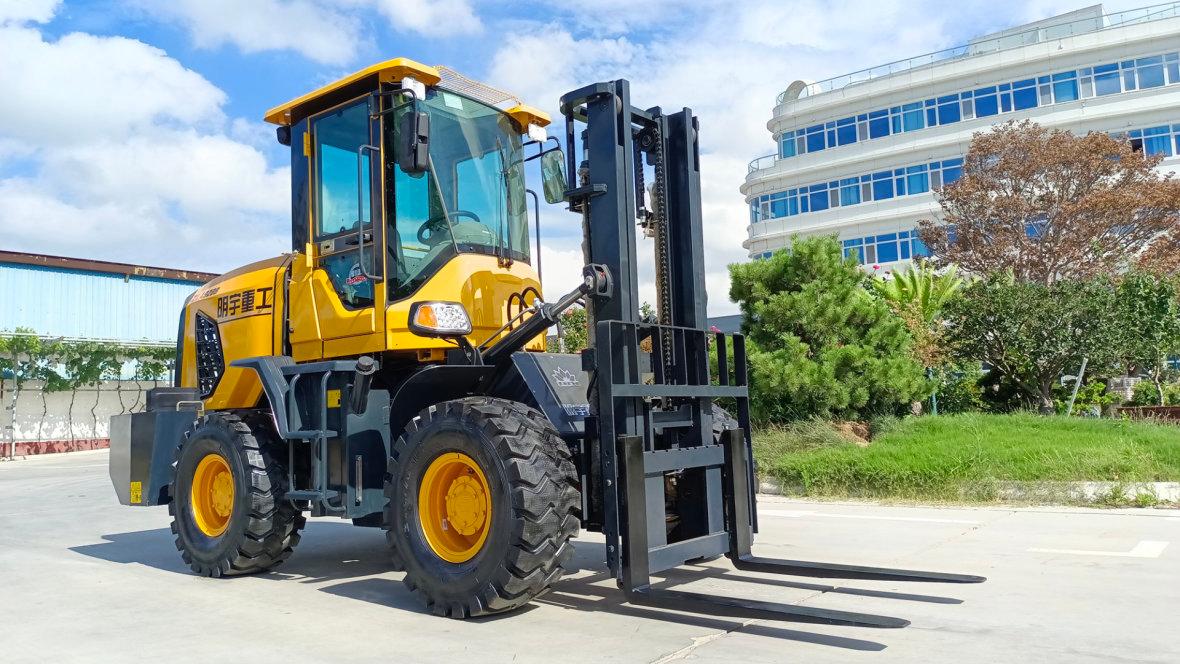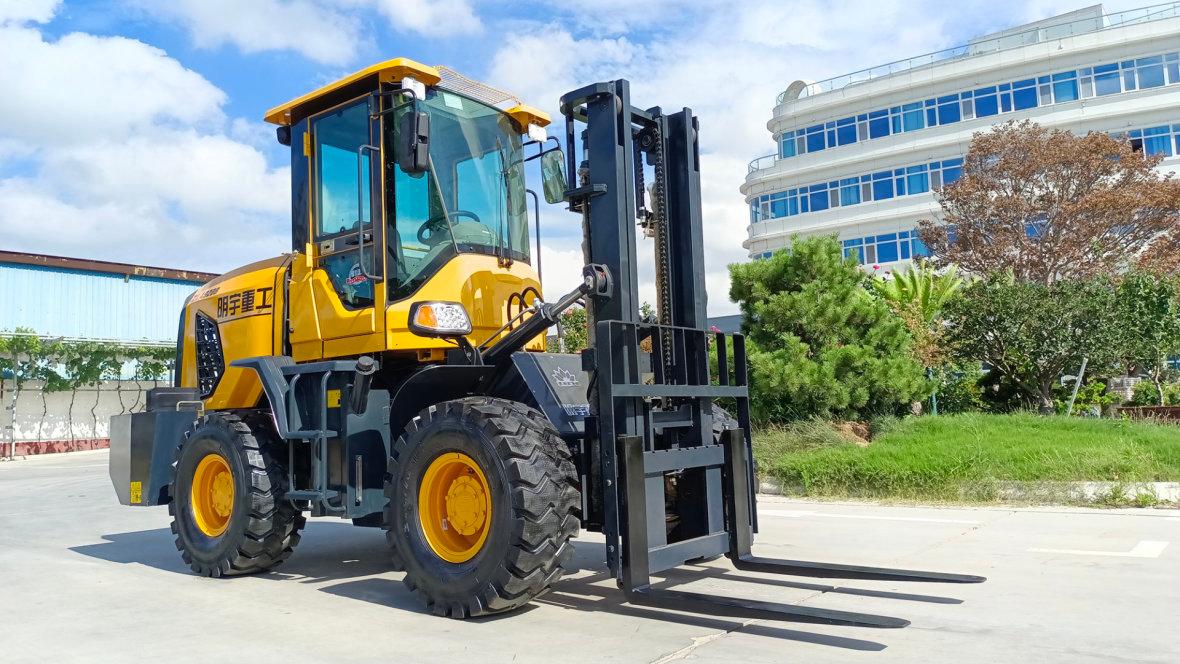What is the maximum load capacity of a forklift?
1. Introduction
Forklifts are essential machines used in various industries, including warehouses, construction sites, factories, and ports. They are responsible for lifting, transporting, and stacking heavy loads, making them indispensable for efficient material handling. However, one of the most crucial aspects of forklift operations is understanding the maximum load capacity—the maximum weight a forklift can safely lift. Misunderstanding or exceeding this capacity can lead to equipment damage, product loss, or even accidents.
In this article, we will explore forklift load capacity in detail, including how it’s determined, the factors influencing it, the types of forklifts with varying capacities, and how to ensure safe and effective use of this powerful machinery.
2. What is Load Capacity?
The load capacity of a forklift refers to the maximum weight the machine can safely lift, transport, and carry. It is a critical metric because it ensures that the forklift operates safely and efficiently, preventing damage to both the machine and the goods it handles.
Difference Between Maximum Load Capacity and Safe Working Load (SWL):
Maximum Load Capacity is the weight that a forklift can lift at its maximum height and reach.
Safe Working Load (SWL) is the load that a forklift can carry when it is within the manufacturer’s specified safety limits. This typically includes a safety margin below the maximum capacity.
The capacity is typically tested by manufacturers in ideal conditions. However, real-world factors such as load placement, forklift design, and operational conditions affect the actual safe load capacity.
3. Understanding Forklift Load Capacity Ratings
Forklift Load Rating Plate
Every forklift comes with a load capacity plate that provides key information on the forklift’s capabilities. This plate is usually located near the operator’s seat or on the mast. Key information on the plate includes:
The forklift’s maximum load capacity (in kg or lbs).
The load center, which is the horizontal distance from the forklift’s front axle to the load’s center of gravity.
The maximum lifting height at which the specified capacity applies.
Different Capacity Ranges:
Forklifts come in a variety of capacities, typically categorized as:
Low-capacity forklifts: Can handle up to 2,000 kg (4,400 lbs). These are ideal for light-duty applications such as moving small pallets and packages.
Medium-capacity forklifts: Ranges from 2,000 kg to 5,000 kg (4,400 lbs to 11,000 lbs). These forklifts are commonly used in general warehouses or factories.
High-capacity forklifts: Can handle 5,000 kg (11,000 lbs) and beyond. These are typically used in industrial settings or construction sites, where heavy materials like steel, concrete, or large equipment are handled.
4. Factors That Affect Maximum Load Capacity
Several factors affect the maximum load capacity of a forklift, and understanding these factors is key to operating a forklift safely.
Lift Height
The higher a forklift lifts, the lower its maximum load capacity. This is because as the load is raised, the forklift’s stability decreases. A forklift that can lift 2,500 kg at a lower height may only be able to lift 1,000 kg at its maximum height.
Load Center
The load center refers to the distance from the forklift's front axle to the center of gravity of the load. If the load is positioned farther away from the axle, it can cause the forklift to tip over. A load placed closer to the forklift will allow it to carry more weight without compromising stability.
Fork Length
Forklifts with longer forks are often used for larger or bulkier loads. However, longer forks tend to decrease the load capacity because they reduce the forklift's overall balance and stability.
Tire Type and Condition
The type of tires (solid, pneumatic, etc.) and their condition can impact how well a forklift can handle its load. Worn or damaged tires may not be able to support the maximum weight and can lead to unsafe operations.
Ground Surface and Stability
The surface on which the forklift operates also affects its load capacity. Uneven surfaces, soft ground, or slopes may reduce the machine's lifting ability, potentially leading to tipping or accidents.
5. Types of Forklifts and Their Load Capacities
Different types of forklifts are designed for different applications, and each type has its own range of load capacities.
Counterbalance Forklifts
These are the most common type of forklift. They have a weight at the back to balance the load in the front.
Typical load capacity: 1,000 kg to 7,000 kg (2,200 lbs to 15,400 lbs).
Reach Forklifts
Reach forklifts are equipped with extendable forks that allow them to reach into racks or shelves. They are ideal for narrow aisle operations.
Typical load capacity: 1,500 kg to 2,500 kg (3,300 lbs to 5,500 lbs).
Telescopic Forklifts (Telehandlers)
Telehandlers have an extendable boom and are ideal for heavy lifting at great heights, often used on construction sites.
Typical load capacity: 3,000 kg to 4,000 kg (6,600 lbs to 8,800 lbs), but can lift much higher at the expense of load capacity.
Pallet Jacks and Stackers
These are the smallest forklifts, typically used for moving pallets and light loads over short distances.
Typical load capacity: 500 kg to 2,000 kg (1,100 lbs to 4,400 lbs).
6. Safety Considerations
Exceeding the forklift’s load capacity can lead to several risks, including:
Tipping: Overloading can make the forklift unstable, causing it to tip over, potentially leading to accidents and injuries.
Damage: Operating a forklift beyond its capacity can cause damage to both the machine and the goods it’s carrying.
To ensure safety:
Always adhere to the maximum load rating specified by the manufacturer.
Understand that lifting height affects capacity; a forklift that can lift 3,000 kg at ground level may only be able to lift 1,500 kg at its highest extension.
Ensure that operators are properly trained in the handling and placement of loads.
Regularly inspect the forklift to ensure its safety features, tires, and components are in good condition.
7. How to Calculate Load Capacity
To calculate load capacity, you must factor in:
Lift height: The greater the height, the lower the capacity.
Load center: A typical load center is 500 mm, but if the load is placed further from the front axle, the capacity will decrease.
Fork length: Longer forks typically reduce capacity.
Many manufacturers provide load capacity charts or capacity calculators that factor in these variables, allowing operators to safely determine the maximum load at a given height and distance.
8. Common Misconceptions About Load Capacity
Several misconceptions exist when it comes to forklift load capacity:
"Forklifts can lift anything." Not true. Every forklift has a specific load limit.
"It’s safe to overload the forklift for short distances." This is dangerous. Overloading even for a short distance can lead to accidents or tipping.
"The forklift can handle more than the rated capacity if the load is balanced." While balance helps, it doesn’t change the fact that the forklift’s capacity is limited by design.
Real-world examples show the dangers of overloading. Incidents of forklifts tipping over or being damaged by overloading are common and can result in costly repairs and injuries.
9. Maintaining and Ensuring Forklift Capacity
Regular maintenance is critical to ensure the forklift can operate within its rated capacity:
Inspect tires, brakes, hydraulic systems, and forks regularly.
Ensure the forklift is correctly calibrated for weight and lift height.
Perform routine checks for wear and tear, particularly after heavy use.
By maintaining the forklift and understanding its capacity, you can prolong its lifespan and ensure safety during operation.
10. Conclusion
Understanding the maximum load capacity of a forklift is essential for safe and efficient material handling. Various factors affect the forklift’s capacity, including lift height, load center, tire condition, and the type of forklift being used. Safety should always be a top priority—exceeding load limits can result in tipping, damage, and accidents. Operators must be trained and adhere to manufacturer guidelines to ensure that they operate forklifts safely and effectively within their rated capacities.
By considering these factors and regularly maintaining the forklift, you can help ensure that your forklift operates efficiently, safely, and within its capabilities.
Post time:Aug.01.2025



